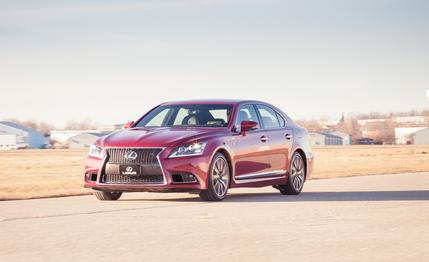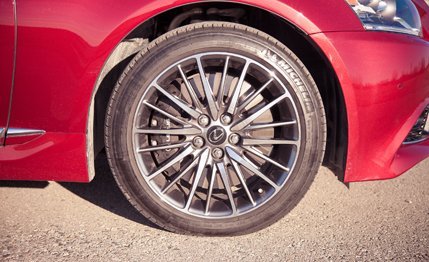 Instrumented Test
TESTED
Instrumented Test
TESTED
Note to luxury automobile manufacturers interested in entering the performance market: The world’s strategic reserve of performance-signifying alpha characters is dwindling fast. BMW has M locked up, Audi claimed RS, Cadillac took V, and greedy old Mercedes-Benz, acting with characteristic disregard for its comrades, took A, M, and G. Thank heaven the letter F was still available, or the Lexus LS460 F Sport might never have seen the light of day.
Building a Better-Behaved Beast
Whereas most manufacturers choose to first work their performance magic on the engine, Lexus virtually ignored it, placing the bulk of its engineering might into chassis mods. Building on the previous LS460’s Sport package, which offered some mild suspension and brake mods with a set of paddle shifters, Lexus has taken the exercise a step further, replacing bushings, adding bracing, and tweaking the shocks for even livelier performance. The latest LS460 F Sport sits 0.4 inch lower than a regular rear-wheel-drive LS and rides on a set of F Sport–specific air springs. A set of beefed-up anti-roll bars work to quell any unwelcome body motions. Grip comes courtesy of 245/45-series all-season rubber wrapping 19-inch, 10-spoke aluminum wheels.

The LS460 F Sport gets Lexus’s variable gear-ratio steering (VGRS), which varies the steering ratio based on vehicle speed and steering-angle data. The net effects of the setup result in steering-wheel travel that ranges from 2.3 to 3.7 turns lock-to-lock, slightly more aggressive than the 2.4-to-3.6-turn range of the standard LS. Lexus has done a good job of imparting a natural feel to the VGRS, but there was a vague sense of disorientation once in a while when the ratio was changing during hard driving.
The F Sport treatment upgrades the front binders, substituting six-piston Brembo calipers and 14.8-inch rotors for the four-piston, 14.0-inch setup found on the standard all-wheel-drive LS460. The rear brakes are the same for both cars, with two-pot calipers pinching 13.1-inch discs. We recorded a 70-mph-to-0 stopping distance of 168 feet, 12 feet fewer than the 2012 Mercedes-Benz E550 4MATIC we tested, a sedan of comparable price and mission that weighs in about 400 pounds less than the 4835-pound F Sport. Although the short stopping distance is a good indicator that the brake and chassis upgrades are worth the investment, most of us found the pedal action less than rewarding, its travel and effort rarely commensurate with actual braking function.

A Skosh Sharper but Still Silky
Toyota built the Lexus brand on the concept of precision for the sake of comfort and consistency, so it comes as no surprise that the engine and the transmission are a championship tag team of silky automotive performance. The F Sport AWD drives like a standard LS460 AWD that’s had a few sessions with a personal trainer—the exhaust is a touch more aggressive, the ride a bit firmer, and turn-in a skosh sharper. The driver can shuffle gears via paddles mounted behind the three-spoke, heated and leather-covered steering wheel or let the Aisin eight-speed transmission peel off torque-managed shifts on its own. There are five shift modes to choose from (Eco, Comfort, Normal, Sport, and Sport Plus). The shifts are nearly transparent in Eco and Comfort modes but unfortunately remain that way even in Sport and Sport Plus. There’s an unwelcome lag between gears in automatic and manual modes that defies the car’s sporting pretensions. The transmission does perform throttle-blipping, rev-matching downshifts in manual mode, however, so that’s where we spent the majority of our drive time. And we still managed to post a 17-mpg average, not far off the mark from the 16-mpg EPA city estimate.